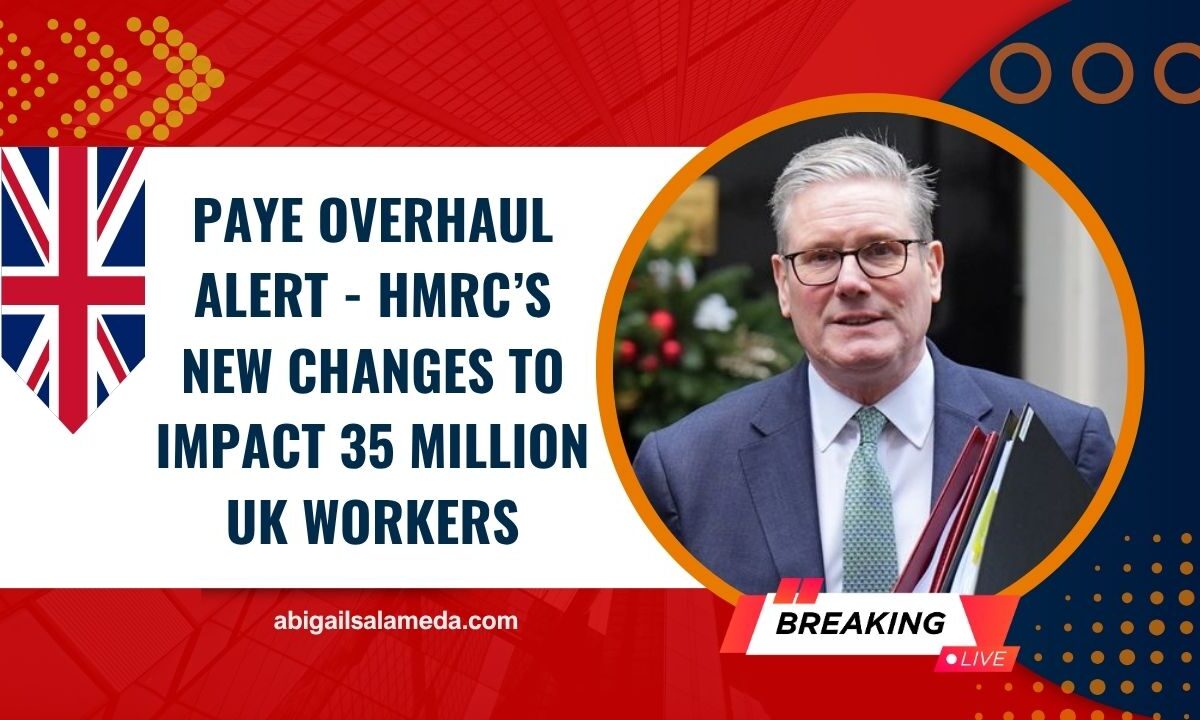The HM Revenue and Customs (HMRC) has announced a significant overhaul of the Pay As You Earn (PAYE) system, which is expected to impact more than 35 million UK workers.
This major reform aims to modernize income tax collection, improve accuracy, and ensure quicker corrections to tax code errors.
While the new changes promise enhanced efficiency, many employees must stay informed to avoid overpaying or underpaying tax as the updated system rolls out in 2025.
What is PAYE, and Why Is It Being Overhauled?
PAYE is the system through which most UK employees have income tax and National Insurance contributions automatically deducted from their wages by their employer. Introduced in 1944, PAYE has undergone a few major changes until now.
However, HMRC is pushing for a digital-first transformation to address outdated systems, recurring errors in tax code allocations, and delayed tax adjustments.
The reform is part of HMRC’s broader Tax Administration Strategy, aiming to make the UK’s tax system more responsive, transparent, and accurate.
Key Highlights of the PAYE Overhaul
| Change | Impact |
|---|---|
| Real-Time Code Updates | Tax codes will be updated more frequently to reflect real-time changes in income. |
| End of Year Adjustments Reduced | HMRC aims to minimize overpayments/underpayments through proactive adjustments. |
| Better Employer Integration | Employers will receive faster notifications about tax code changes. |
| Multiple Job Coordination | Workers with multiple jobs will see improved accuracy in tax allocations. |
| Digital Tax Code Dashboard | A new online dashboard will allow employees to view and manage their tax code. |
Who Will Be Affected?
The changes will apply to anyone paying tax via PAYE, including:
- Full-time and part-time employees
- Public sector and NHS staff
- Multiple job holders
- Freelancers paid through PAYE
- Retirees with workplace pensions
According to HMRC, over 35 million individuals will experience adjustments in how their tax is calculated and reported.
What Are the Benefits for Workers?
- Fewer Shock Tax Bills – One of the main benefits is preventing surprise underpayment notices at the end of the tax year.
- Increased Accuracy – Real-time income tracking means that tax calculations will be more precise throughout the year.
- Better Transparency – The online tax code dashboard gives workers more control and visibility over their personal tax information.
- Efficiency for Employers – Businesses will benefit from more transparent communication and fewer employee queries about incorrect tax codes.
What You Should Do to Stay Ahead
As these changes roll out, UK workers are encouraged to:
- Create or access their HMRC Personal Tax Account to monitor tax code changes.
- Report any income changes (second job, pay increase, benefits) promptly to avoid errors.
- Check payslips regularly to ensure tax deductions align with the assigned code.
- Be cautious about scams pretending to be HMRC offering code corrections or refunds.
Why Now? The Reason Behind the 2025 Rollout
This reform is part of HMRC’s long-term Making Tax Digital (MTD) initiative. After the successful implementation of MTD for VAT, attention has now turned toward income tax systems.
The 2025 PAYE overhaul is being gradually introduced with pilot testing starting in late 2024, and full-scale changes expected to begin in early to mid-2025.
Potential Challenges Ahead
While the update aims for greater efficiency, some risks and concerns remain:
- Data accuracy remains crucial — any errors reported by employers may result in incorrect codes.
- Not all workers are digitally literate, making it harder for some to check or appeal tax code errors.
- There may be transitional confusion, particularly among those with multiple incomes or pensioners.
How HMRC Is Supporting the Transition
HMRC is providing:
- Enhanced support via helplines and online chat
- Educational content and workshops for employers and payroll teams
- Simplified tools to explain new tax code components
- Notifications via email and letters outlining any changes to personal tax codes
The PAYE system overhaul marks a new era in UK income tax administration, directly affecting millions of workers. While it promises better accuracy, transparency, and control for employees, staying informed is essential.
With the new system due to fully launch in 2025, now is the time to ensure you have access to your HMRC account, understand your tax code, and know your rights.
Proactive engagement will be key to avoiding mistakes and ensuring you’re not over or under-taxed as these changes take place.
FAQs
When will the PAYE overhaul officially begin?
The overhaul will begin rolling out in late 2024, with full implementation expected in early to mid-2025 across all PAYE workers.
How do I check if my tax code is correct?
Log in to your HMRC Personal Tax Account to view your current tax code and report any discrepancies immediately.
Will I still get a P60 at the end of the year?
Yes, P60s will still be issued, but the new system aims to reduce the likelihood of large overpayments or underpayments shown on that form.




